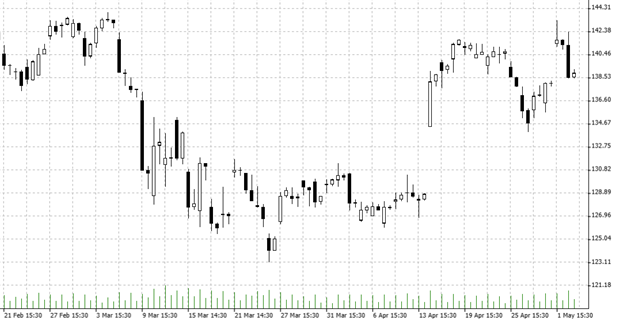

03.05.2023 – No sooner did the banking crisis seem to be over, than there are new worries. Or was the recent setback on Wall Street due to today’s decision by the Federal Reserve? In fact, one has to do with the other.
Following JPMorgan’s purchase of First Republic, the share prices of some regional banks dipped yesterday. The next candidates for collapse from an investor’s point of view were, first, PacWest Bancorp, down 28 percent. Next were First Foundation Inc. and Western Alliance, with a selloff of about 15 percent. The SPDR S&P Regional Banking, which is the exchange-traded fund on regional banks (symbol: KRE), lost 6.3 percent yesterday. In contrast, JPMorgan is doing quite well in all the turmoil, here is the four-hour chart.

Source: Bernstein Bank GmbH
Either some of the small institutions are teetering because they are having trouble finding new customers in the wake of the rate hike – or borrowers are in crisis. Perhaps some bank runs are already underway again. Or, after the purchase of First Republic, investors are finding that the big sharks like JPMorgan are making fat pickings and collecting the scared customers of other banks – and that the small institutions are being left for the taking.
Bad loans
In any case, the distrust persists. One of the triggers for the sell-off was an interview by Charlie Munger with the Financial Times. The legendary investor is Vice Chairman of the investment company Berkshire Hathaway, which is headed by the major U.S. investor Warren Buffett. Munger judged that many banks are full of bad commercial mortgage loans. Pain awaits the market, he said, but it will likely be nowhere near as bad as 2008.
Which brings us to the Fed. Because when regionally rooted financial institutions falter in rows, there are consequences for state economies. Which could lead to stagnation and layoffs. And in this environment, it’s hard for the Fed to raise interest rates much. Or else the central bank wants a shakeout.
The Fed is watching the banks
In any case, Nick Timiraos of the Wall Street Journal wrote that the Fed is watching very closely the market reaction to JP Morgan’s acquisition of First Republic. The journalist is considered the Fed’s mouthpiece in the media landscape.
Because of the recent turmoil at lending institutions, the doves on the Federal Open Market Committee may have pushed to spin Fed Chairman Jerome Powell’s statement in the press conference to mean that the Fed was approaching a pause in rate hikes, according to the financial blog Newsquawk. According to the blog, 85 percent of the market is assuming a 25 basis point rate hike.
Meanwhile, the JOLTS (Job Openings and Labor Turnover Survey) data on the labor market came in cooler than expected. According to JOLTS, job openings fell to 9.59 million from 9.97 million. The consensus had been 9.775 million. That means a cooling labor market gives the Fed arguments for a more lenient stance on tightening – because fewer jobs means a brake on the wage spiral.
Waiting for the Oracle
Which brings us to a look into the crystal ball: If the Fed raises interest rates only moderately, as expected, and announces in the statement that tightening will end soon, this should strengthen the bulls. There should be a jump to the upside if the interest rate hike fails completely – because more money will then flow into the stock market. However, the market could also take this as a signal that there is more going on at the banks than previously suspected. A surprise interest rate move of 0.5 percent is likely to send the market diving, because money is then likely to flow out of equities and into newly issued Treasuries, and because new worries about the banks are emerging. However, the press conference will be the most important event: We can expect another big one-sidedness with sharp price jumps in one direction or the other. Which will boost the vola. Whether long or short – we wish you good luck with your trades!
_________________________________________________________________________________________________________________________
The content of this publication is for general information purposes only. In this context, it is neither an individual investment recommendation or advice nor an offer to purchase or sell securities or other financial products. The content in question and all the information contained therein do not in any way replace individual investor- or investment-oriented advice. No reliable forecast or indication for the future is possible with respect to any presentation or information on the present or past performance of the relevant underlying assets. All information and data presented in this publication are based on reliable sources. However, Bernstein Bank does not guarantee that the information and data contained in this publication is up-to-date, correct and complete. Securities traded on the financial markets are subject to price fluctuations. A contract for difference (CFD) is also a financial instrument with leverage effect. Against this backdrop, CFD trading involves a high risk up to the point of total loss and may not be suitable for all investors. Therefore, make sure that you have fully understood all the correlating risks. If necessary, ask for independent advice. CFDs are complex instruments and are associated with the high risk of losing money quickly because of the leverage effect. 68% of retail investor accounts lose money trading CFD with this provider. You should consider whether you understand how CFD work and whether you can afford to take the high risk of losing your money.7
